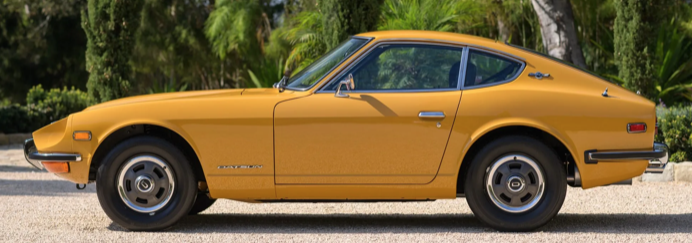American automobile model year 1955 saw the greatest sales volume in history to that date. Much of what sparked that sales surge was the announcement of redesigned (Chrysler Corporation, General Motors' Chevrolet and Pontiac) or massively facelifted (Ford, Mercury, Nash, Packard, Studebaker) cars, all featuring various kinds of panoramic (wraparound) windshields.
It was GM that launched wraparounds in what proved to be, not the wave of the future, but a fad or fashion whose welcome was passing by 1960. That launch was for 1954 when Oldsmobiles, Buicks and Cadillacs got new bodies.
Those new GM cars seemed sensationally futuristic at the time. Besides the panoramic windshields that had been previewed by "dream cars," those new designs featured low hoods, long trunks and proportionally higher passenger compartment greenhouses on those overall lower (than 1953) cars. Of course, those new designs were popular. Compared to the 1953 calendar year, calendar year 1954 sales for Oldsmobile, Buick and Cadillac respectively increased 36, 10, and 20 percent, while most other brands showed declines. Overall 1954 American car sales fell 10 percent from 1953. Ford and Chevrolet sales were fairly constant over the two years.
Suffering the most were the "independent" (non- Big Three) brands. But Big Three member Chrysler Corporation's brands also experienced serious sales declines. An important reason was their seemingly out-of-date styling. I wrote about their '54 facelifts
here.
Decline percentages for Chrysler brands were: 40 for entry-level Plymouth, the firm's highest-production line; 48 for Dodge, another normally high-volume car; 46 percent for DeSoto; and 37 percent for Chrysler.
In the Gallery below 1954 Oldsmobile and Buick four-door sedans are compared to Chrysler Corporation models with similar list prices. This is an attempt to show the designs the typical buyer faced if considering sedans in those price categories. Clearly, the GM cars sold well and Chrysler's didn't. But were those GM designs actually better than those of competing Chrysler products? From the perspective of 70 years later, the matter is not so clear.
Gallery
1954 Oldsmobile 88 - car-for-sale photo
The best-looking GM designs were on sporty hardtop coupes, but as mentioned above, sedans were generally the go-to models in those days. (Buick was a 1954 exception where its hardtops often outsold 4-door models.)
1954 Buick Special - car-for-sale photo
GM Styling supremo Harley Earl usually favored high hoodlines suggestive of a powerful motor underneath. But his 1954-1955 redesigned cars had high fenderlines and hoods not raised far above them. As mentioned in the text, the key styling feature was the wraparound windshield.
1954 Dodge Coronet - unknown photo source
The competing Chrysler Corporation car. Slightly smaller than the new GM B-body competition. More rounded sides. But there's that old-fashioned windshield.
1954 Oldsmobile Super 88 - RM Sotheby's photo
GM's more upscale B-body cars were almost identical to the entry-level ones so far as exteriors are concerned.
1954 Buick Century - Hessney Auctions photo
Buick's Century was basically a Special with a more powerful engine.
1954 Chrysler Windsor - car-for-sale photo
However, prices were high enough to yield their competition from Dodge to the Chrysler's lower-price Windsor line that had a different basic body.
1954 Buick Super - Saratoga Motorcar Auctions photo
Buick Supers and Roadmaster had GM's new C-bodies. A-pillars are vertical, unlike the slanted B-body ones. Hoods here are more raised and fenderlines slightly lower.
1954 DeSoto Firedome - car-for-sale photo
The competing Chrysler Corporation body is similar to GM's 1948-vintage C-bodies and 1949-1954 A-bodies mostly found on Chevrolets and Pontiacs. The main similarity being the separate rear fender, a feature also seen on 1954 Packards. The DeSoto's hood is high: Harley Earl would have been pleased. These and some other style elements had been found on the road for several years, making DeSotos and Chryslers seem dated compared to the new GM cars.
1954 Buick Roadmaster - unknown photo source
Top-of-the-line Buick.
1954 Chrysler New Yorker - unknown photo source
Top of the standard Chrysler line (Chrysler Imperials were the firm's luxury line and priced much higher than the Buick).
Back in 1954, the Oldsmobiles and Buicks pictured here indeed seemed like glimpses into the future, and the Chrysler Corporation cars looked out of date. Yet now those GM sedans strike me as looking more awkward than the Chrysler cars. Why? I think it has to do with the panoramic windshields. They are bulky. Their vertical and forward-slanting A-pillars interrupt the front-to rear design flow. For that reason, Chrysler Corporation's redesigned 1955 cars with back-slanting A-pillars have aged better than competing models with GM-style wraparounds.





















































